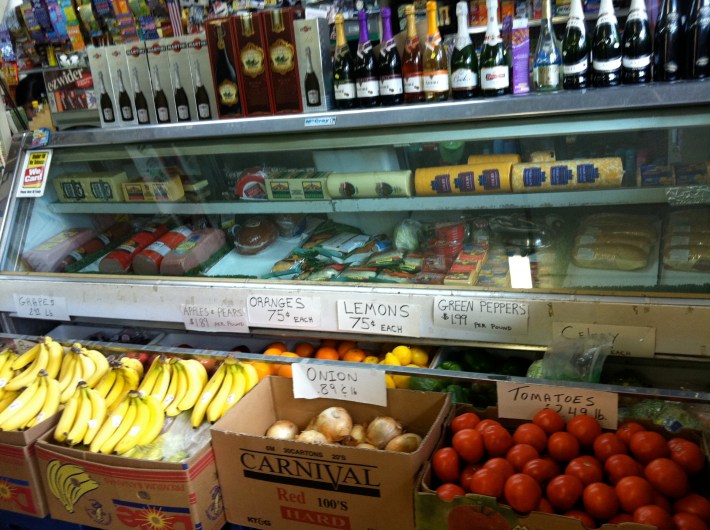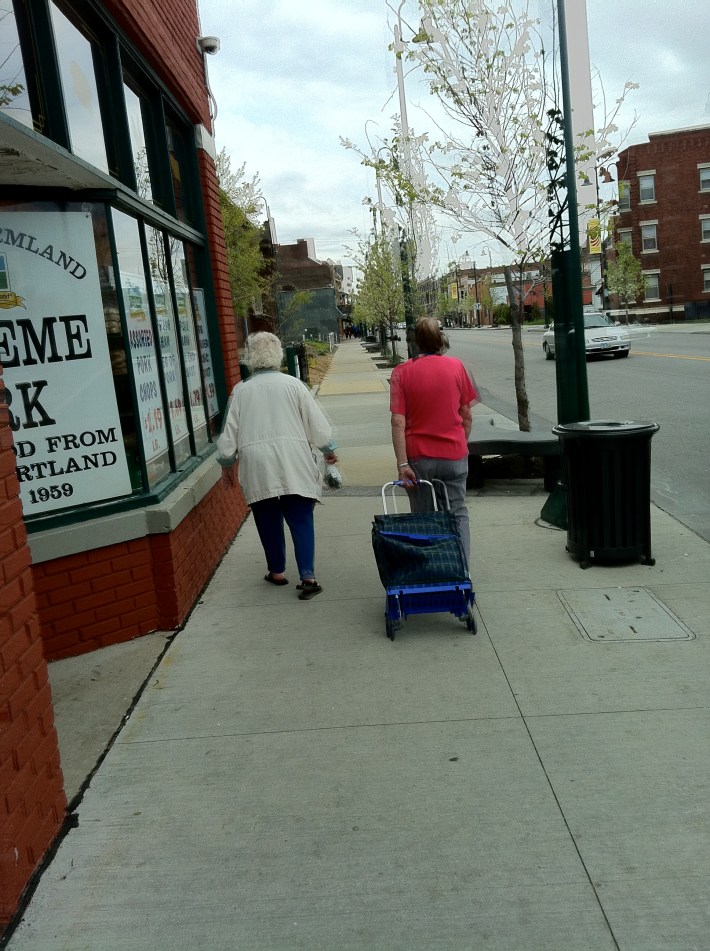Much has been made of the food desert phenomenon afflicting the industrial Midwest.
GOOD Magazine, Dateline, NBC and countless others have weighed in on the apparent market failure that causes grocery stores to shun cities like Detroit and Cleveland like a bad case of head lice.

This whole storyline reached a fever pitch earlier this year when it was widely circulated that the city of Detroit -- all 140 miles of it -- lacked a single grocery store. This was, of course, patently false. A quick Google search shows that there are dozens, even hundreds, of foodsellers populating Detroit's neighborhoods.
What type of grocer does business in down-and-dirty Detroit? One example is the Honey Bee Market, a family-owned business that has been operating in the city for five decades. It carries a wide selection of Central American ingredients, in addition to plenty of fruits and vegetables. The store was voted "most fun" by Detroit's Metro Times.
So how did the Wall Street Journal, Dateline and NBC get it so wrong about Detroit? I argue that it is all about semantics, along with a large dose of cultural relativism.
The argument about food deserts seems to be premised on the assumption that supermarkets -- suburban-style, big-box, corporate chain stores with plenty o' parking -- are inherently superior to walkable, family owned food markets that serve low-income populations. The media portrays these corner markets as liquor stores or "discount" stores carrying little fresh produce and lots of Hostess cupcakes.
While there is certainly a class of convenience store that lacks healthy food options, many analyses have completely ignored the presence of small, family-owned food markets and their important role in feeding urban populations.
The USDA -- which recently released its "food desert locator" to wide fanfare -- admits to using "supermarkets and large grocery stores as a proxy for sources of healthy and available food." Mary Reardon, a spokesperson for USDA said, "We define supermarkets and large grocery stores as food stores with at least $2 million in [annual] sales that contain all the major food departments found in a traditional supermarket."
"We do not address smaller outlets that have fresh food," she said. But she added that there are some local studies that have examined the issue. Here definitions are important. One of the two studies cited by the USDA [PDF] showed that depending on which definitions are employed, between 17 and 87 percent of New Orleans is a food desert.
To say that food sellers who do more than $2 million in business provide fresh food and those who sell less do not is a rough estimate to say the least. In fact, in my experience, it's false. According to the locator, I live right on the border of a USDA-defined "food desert." The thing is, I've never had better access to food in my life. The corner market by my house is exactly the type of place the USDA or CNN would ignore. The Deli, as it's called, is kind of shabby looking from the outside and there’s no way it’s more than 10,000 square feet. But I love it.

It’s run by a family. They sell fresh-sliced cold cuts, fresh fruits and veggies. They have everything you’d need on a day-to-day basis, at prices I think are more than fair. I know because it’s helped me many times in a pinch. You can get eggs, potatoes, grapes, cheese (real cheese), sardines and even even pulpo (octopus) in a can. And of course you can also get essentials like band-aids, cheap beer, good beer, baby formula, toilet paper and macaroni and cheese. I have a recipe that calls for Jiffy corn bread mix and sour cream. They have them both.
It's not the only market within a short walk from my house; there are literally half a dozen. There's a Vietnamese market that I've grown to like for its unusual baked goods, selection of fish and exotic produce including escarole. There is Stockyard Meats, a family-owned butcher and general grocery, where you can order a whole pig for roasting. Right next door is a Save-A-Lot, which is a grocery in every other sense than the USDA/CNN definition. It's no Whole Foods, but it has produce, meat, canned goods, frozen foods at prices that are appropriate for the neighborhood's median household income ($25,000 at the last Census).
Just over a mile away is a "traditional" grocery store, by USDA definition, with a fish counter and a dairy aisle. It's an easy trip by bike. But most of my neighbors, the low-income folks that that these types of studies are generally concerned with, don't drive and don't bother making the trek. And why would they? You can get everything you need in a short walk.
What the USDA fails to realize is that if food stores are located very close to your house, they needn't be as large. You can pop in many times a week and pick up a light enough load to carry. That's what many of my neighbors and I do. As a result, we don't need SUVs. We don't need acres of asphalt. Our neighborhoods are more livable thanks to corner markets.
What The Deli lacks in selection, it makes up for in accessibility. I'll take walkability over 50 kinds of cereal and 14 kinds of peanut butter any day of the week.
As for the claim that that small food stores are unfairly exploiting their consumers, even the USDA's analysis doesn't support that conclusion. A 2009 study by the agency [PDF] found that those in the lowest income bracket (those that make between $8,000 and $30,000 annually) pay just 1.3 percent more than those in the next highest income bracket for food. Factor in the fact that many of these folks don't need to pay for gas, car insurance and maintenance, and suddenly walkable food markets start to seem like a bargain.
Why does all this matter? The food desert problem, at least the way it's been framed, seems to make a strong argument for cities to offer tax incentives for suburban-scale grocery stores to enter the city. Indeed the Obama Administration has offered $400 million to help expand food access in American food deserts. But if a big, corporate supermarket gets an unfair, taxpayer-funded boost, what will that mean for The Deli or Stockyard Meats?
There is a very logical, business explanation for why this hasn't occurred already. The new grocery store would have to be within one-half mile to serve people who don't drive, which is a significant part of the Cleveland market. The city simply doesn't have the density to support so many large, walkable groceries. Instead, small markets fill that niche.
Without small markets like The Deli, food access and malnutrition would be a much bigger problem in Cleveland and many other cities throughout the United States. Rather than dismissing these businesses, the USDA should study these stores, how they make their stocking decisions and what room there is for improvement. Large grocery stores may offer a wide variety of fresh produce, but they come with a built-in deficit when it comes to accessibility for car-free people.






